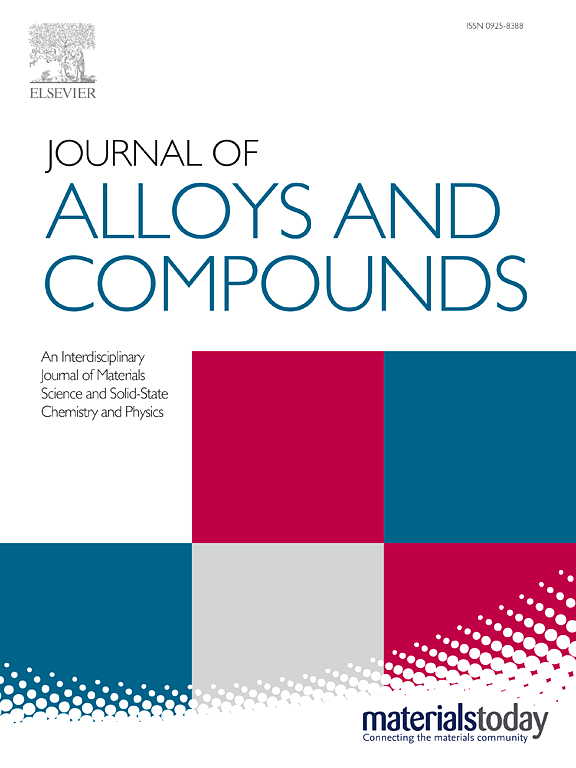Effect of heat treatment on microstructure, phase transformation behavior and shape memory effect of NiTi shape memory alloy manufactured by additive manufacturing
IF 5.8
2区 材料科学
Q2 CHEMISTRY, PHYSICAL
引用次数: 0
Abstract
NiTi shape memory alloy (SMA) components fabricated via additive manufacturing exhibit broad application prospects in biomedical and aerospace fields. However, directly additively manufactured NiTi SMAs often suffer from inhomogeneous phase distribution and unstable shape memory properties. Heat treatment can effectively homogenize phase distribution and enhance the stability of shape memory performance. In this study, aging treatments at varying durations and temperatures were conducted on NiTi SMAs produced by laser-directed energy deposition (L-DED) to achieve more stable and superior mechanical performance. The effects of different heat treatment regimes on microstructure evolution, elemental/phase distribution, and shape memory behavior were systematically investigated through experimental characterization and molecular dynamics (MD) simulations. Key findings include: Compared to as manufactured samples, aging at 400 °C to 600 °C minimally influenced NiTi₂ distribution but universally promoted an increase in phase transformation temperatures and transformation enthalpy, meanwhile, prolonged aging durations further elevated phase transformation temperatures. Aging at 500 °C and 600 °C facilitated a reduction of high angle grain boundaries in L-DED NiTi SMAs and enhanced shape memory effects, which MD simulations attributed to diminished grain boundary resistance to phase transformation. Aging at 500 °C and 600 °C also stimulated the precipitation of Ni₄Ti₃ phases, enabling matrix strengthening and improved shape memory performance, with extended aging times promoting precipitate coarsening. This work provides insights into optimizing aging treatments to stabilize and enhance the properties of L-DED NiTi SMAs, thereby advancing their broader industrial adoption.热处理对增材制造NiTi形状记忆合金组织、相变行为及形状记忆效应的影响
通过增材制造技术制备的NiTi形状记忆合金(SMA)部件在生物医学和航空航天领域具有广阔的应用前景。然而,直接增材制造的NiTi sma往往存在相分布不均匀和形状记忆性能不稳定的问题。热处理可以有效地均匀化相分布,提高形状记忆性能的稳定性。在本研究中,对激光定向能沉积(L-DED)制备的NiTi sma进行了不同时间和温度的时效处理,以获得更稳定和优越的力学性能。通过实验表征和分子动力学(MD)模拟,系统地研究了不同热处理制度对微观组织演变、元素/相分布和形状记忆行为的影响。主要发现包括:与制造样品相比,在400℃~ 600℃时效对NiTi 2分布影响最小,但普遍促进了相变温度和转变焓的升高,同时,延长时效时间进一步提高了相变温度。500°C和600°C时效有助于L-DED NiTi sma中高角度晶界的减少和形状记忆效应的增强,MD模拟将其归因于晶界对相变的阻力降低。500℃和600℃时效也促进了Ni₄Ti₃相的析出,增强了基体的强度,提高了形状记忆性能,延长时效时间促进了析出相的粗化。这项工作为优化时效处理提供了见解,以稳定和提高L-DED NiTi sma的性能,从而促进其更广泛的工业应用。
本文章由计算机程序翻译,如有差异,请以英文原文为准。
求助全文
约1分钟内获得全文
求助全文
来源期刊

Journal of Alloys and Compounds
工程技术-材料科学:综合
CiteScore
11.10
自引率
14.50%
发文量
5146
审稿时长
67 days
期刊介绍:
The Journal of Alloys and Compounds is intended to serve as an international medium for the publication of work on solid materials comprising compounds as well as alloys. Its great strength lies in the diversity of discipline which it encompasses, drawing together results from materials science, solid-state chemistry and physics.
 求助内容:
求助内容: 应助结果提醒方式:
应助结果提醒方式:


